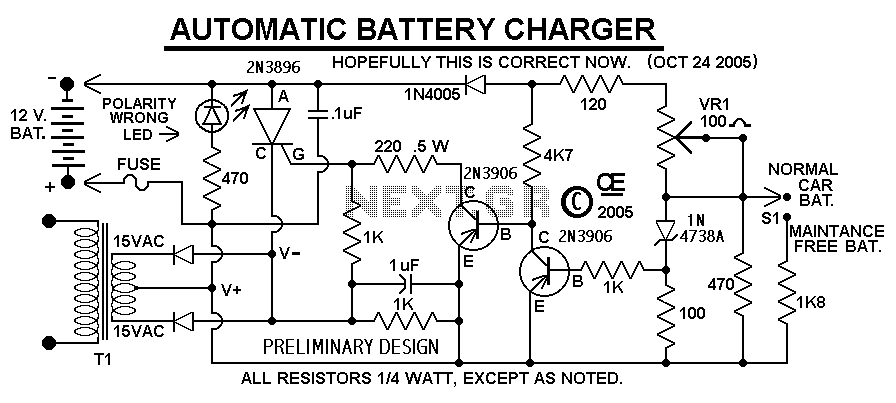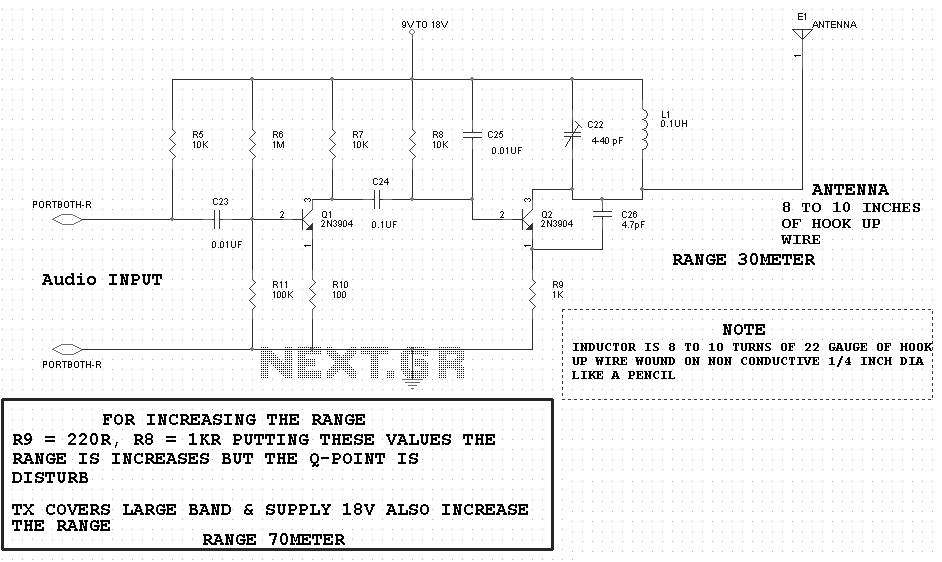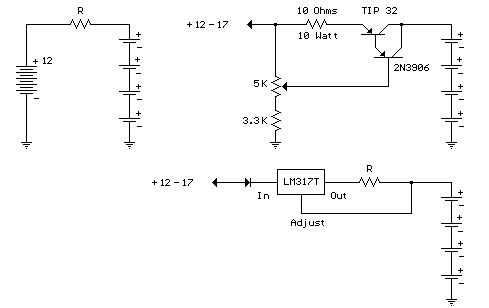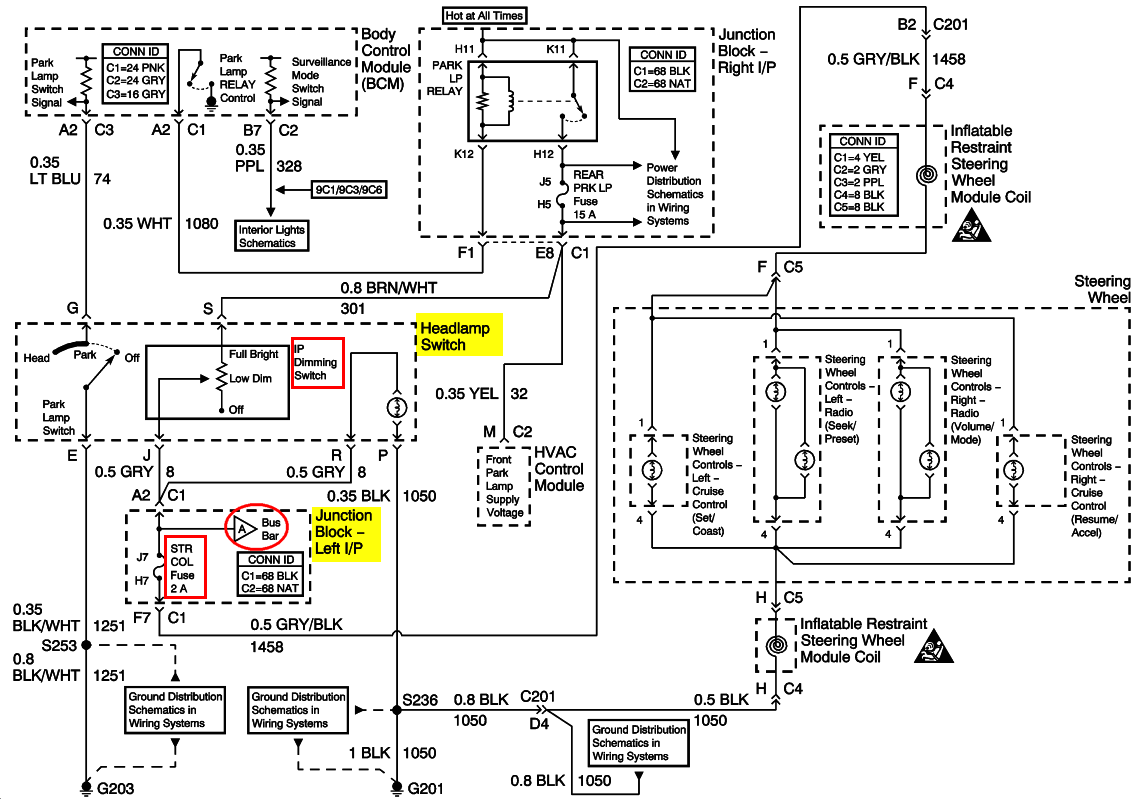
Car and Motorcycle Battery Tester
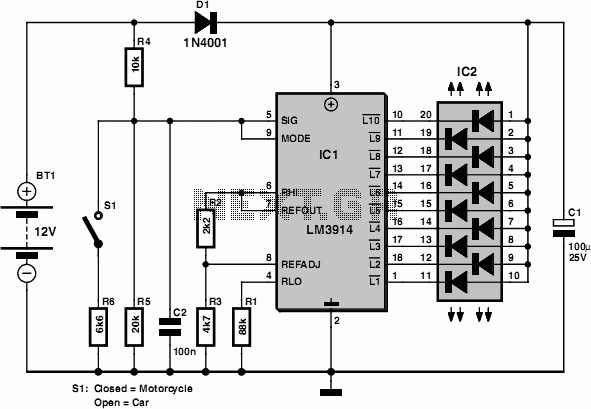
Car and Motorcycle Battery Tester Circuit. Going camping today often requires bringing various electronic devices for daily activities or entertainment. Typically, a charged lead-acid battery and a power source are essential.
The Car and Motorcycle Battery Tester Circuit is designed to assess the condition and charge level of lead-acid batteries commonly used in vehicles. This circuit can be particularly useful for campers who rely on battery-powered devices, ensuring that batteries are adequately charged before embarking on a trip.
The circuit typically consists of a microcontroller or an analog voltmeter, resistors, diodes, and a display unit. The microcontroller monitors the voltage levels of the battery and determines its state of charge. When the battery is connected to the tester, the circuit measures the voltage and displays it on an LCD or LED screen, indicating whether the battery is fully charged, partially charged, or needs recharging.
To build the circuit, a voltage divider may be employed to scale down the battery voltage to a level suitable for the microcontroller's analog-to-digital converter (ADC). This allows for accurate readings of the battery voltage. Additionally, protection diodes can be included to prevent reverse polarity connections, which could damage the circuit.
The tester circuit can also incorporate an audible alarm or LED indicators to provide immediate feedback on the battery's status. This feature is particularly beneficial in camping scenarios, where quick assessments of battery health are crucial for maintaining device functionality.
Ultimately, the Car and Motorcycle Battery Tester Circuit serves as a vital tool for outdoor enthusiasts, ensuring that their battery-powered devices remain operational throughout their adventures.Car and Motorcycle Battery Tester Circuit Going camping nowadays involves taking lots of electronic equipment whether for day to day running or for fun and entertainment. Most of the time a charged lead acid battery and a power.. 🔗 External reference
The Car and Motorcycle Battery Tester Circuit is designed to assess the condition and charge level of lead-acid batteries commonly used in vehicles. This circuit can be particularly useful for campers who rely on battery-powered devices, ensuring that batteries are adequately charged before embarking on a trip.
The circuit typically consists of a microcontroller or an analog voltmeter, resistors, diodes, and a display unit. The microcontroller monitors the voltage levels of the battery and determines its state of charge. When the battery is connected to the tester, the circuit measures the voltage and displays it on an LCD or LED screen, indicating whether the battery is fully charged, partially charged, or needs recharging.
To build the circuit, a voltage divider may be employed to scale down the battery voltage to a level suitable for the microcontroller's analog-to-digital converter (ADC). This allows for accurate readings of the battery voltage. Additionally, protection diodes can be included to prevent reverse polarity connections, which could damage the circuit.
The tester circuit can also incorporate an audible alarm or LED indicators to provide immediate feedback on the battery's status. This feature is particularly beneficial in camping scenarios, where quick assessments of battery health are crucial for maintaining device functionality.
Ultimately, the Car and Motorcycle Battery Tester Circuit serves as a vital tool for outdoor enthusiasts, ensuring that their battery-powered devices remain operational throughout their adventures.Car and Motorcycle Battery Tester Circuit Going camping nowadays involves taking lots of electronic equipment whether for day to day running or for fun and entertainment. Most of the time a charged lead acid battery and a power.. 🔗 External reference
Warning: include(partials/cookie-banner.php): Failed to open stream: Permission denied in /var/www/html/nextgr/view-circuit.php on line 713
Warning: include(): Failed opening 'partials/cookie-banner.php' for inclusion (include_path='.:/usr/share/php') in /var/www/html/nextgr/view-circuit.php on line 713
